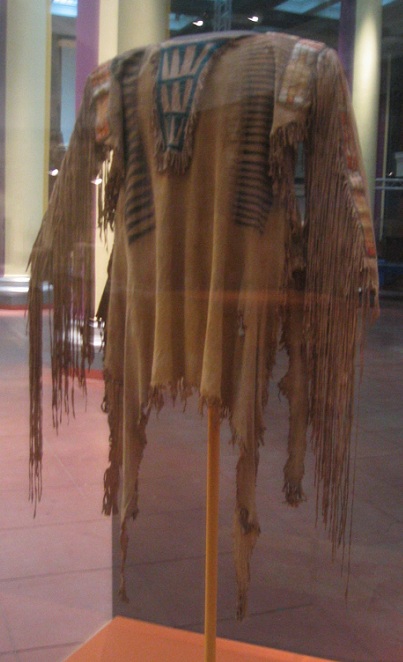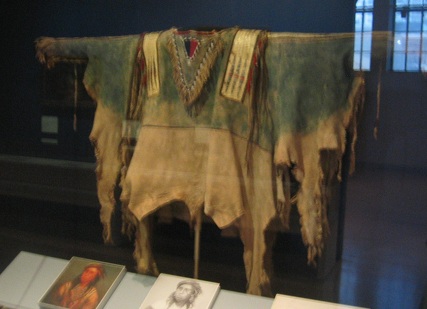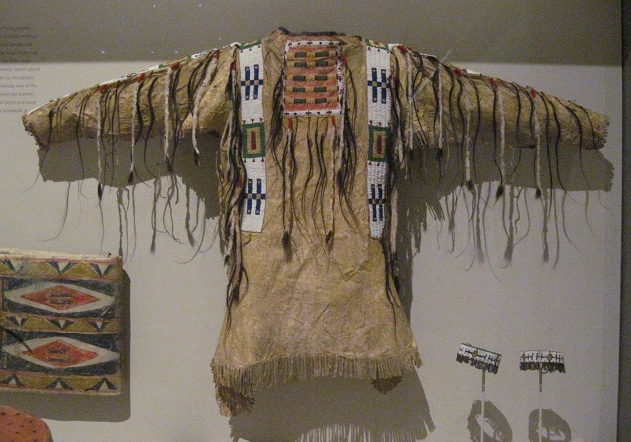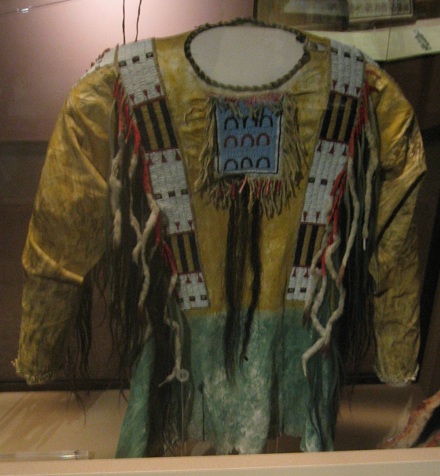Subject: wic'âša 'shirt wearer' warrior
Culture: Lakota Sioux
Setting: Plains Wars, northern Great Plains 1862-1890
Object: costume
Fort Worth Museum of Science and History > Native American Gallery *
"Lakota Hair-Fringed Shirt Tanned hide, glass beads, hair, Early 20th century
Among the Sioux bands, one of the most important duties was the appointment of 'shirt wearers.'
Such shirts -- whose main distinguishing feature was the hair-lock fringe on the sleeves --
symbolized the high status of the wearer.
* Brooklyn Museum > Americas
"Shirt Sioux, Yanktonai artist, early 19th century Minnesota Buckskin, porcupine quills, glas beads, pigment, sinew, fur, maidenhair fern stems ...
Plains Tribes men's shirts are often decorated with representations of personal status. The many brown horizontal bands on the right side of this shirt may represent horsewhips, symbolizing the number of horses the wearer gave away as gifts. The left side of the shirt has thick, black hourglass figures that have been interpreted as blankets traded during successful commerce. Through giving valuable presents or accomplishing peaceful trades, this shirt's owner would have acquired great reputation and respect.
Carnegie Museum of Natural History > Alcoa Foundation Hall of American Indians *
"MAN'S SHIRT Lakota maker, Crow owner, collected 1904 ..."
* Royal Ontario Museum > Canada -- First Peoples
"Chemise de chef cérémoniel ou de guerrier vainqueur
Décor de piquants, peau de cerf Lakota?, v.1862 ..."
Museum of Fine Arts > Art of the Americas > Native North American Art *
"Shirt Lakota [Sioux] Possibly North or South Dakota, about 1875 Buckskin colored with natural pigments,
human hair, ermine, glass beads, cotton plain weave, trade cloth, silk plain weave ribbon, sinew, and cotton thread
As he accumulated respect on the battlefield, a warrior earned the right to wear a shirt, into which his strength, ability, and even his character were absorbed. Among the Lakota, those of high honor wore painted shirts, and each lock of hair represented a specific act of bravery in battle.
The ermine tassels are a sign of high rank and may indicate that the original wearer was a chief. ..."



